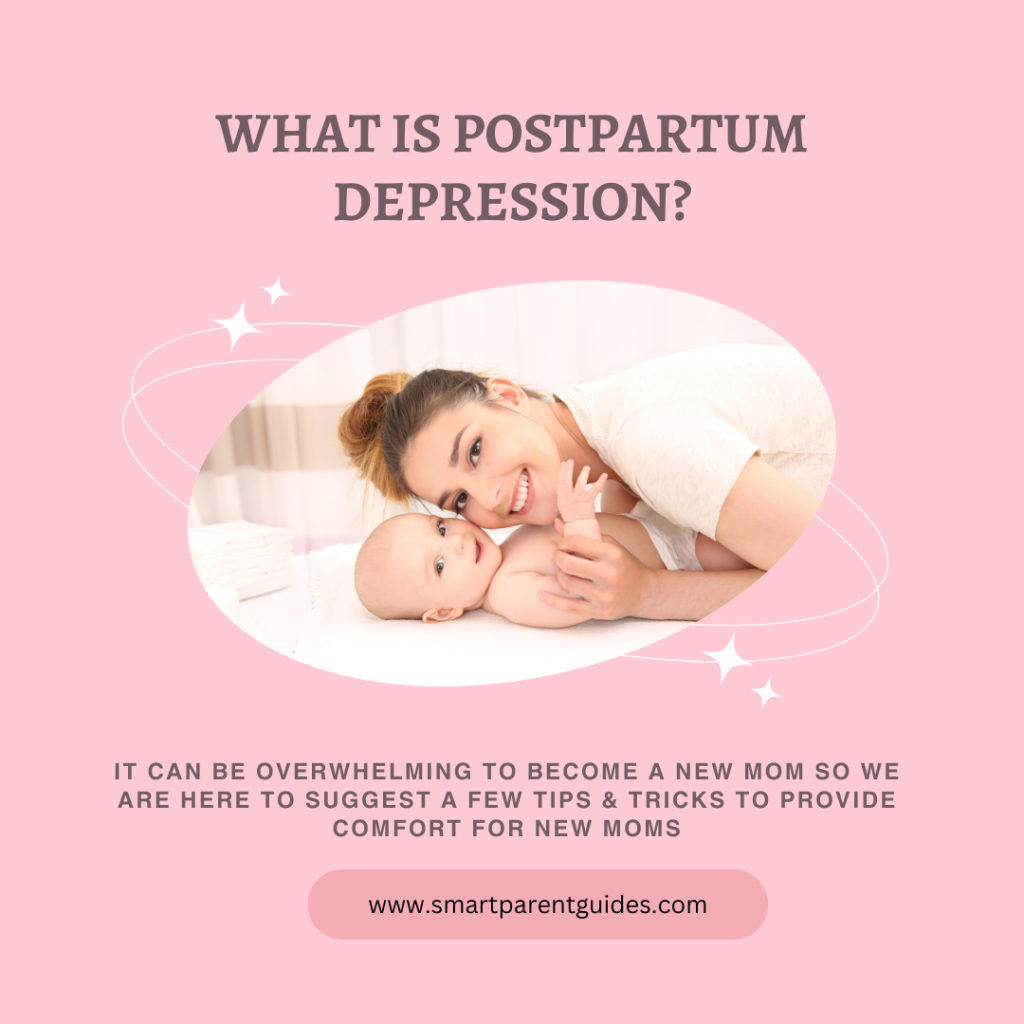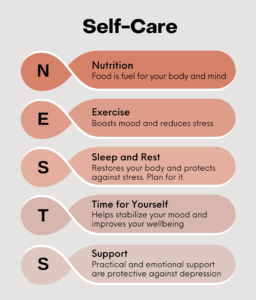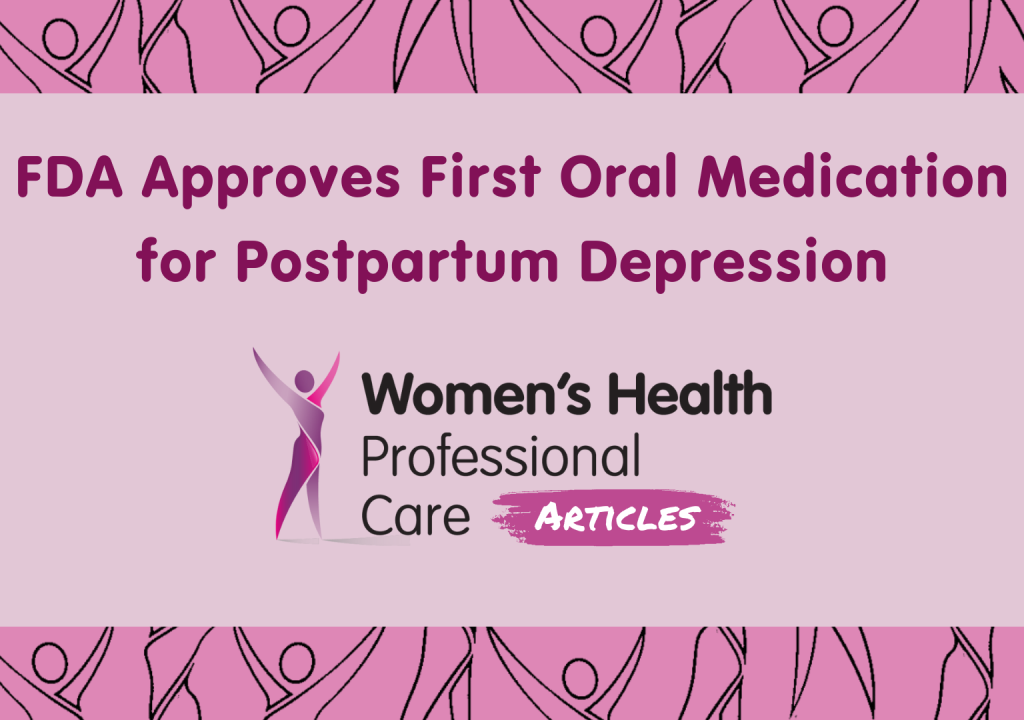Postpartum depression (PPD) is a serious condition that affects many women after childbirth. Knowing the facts can help you or a loved one recognize and address it early. Here, we explore the essential aspects of postpartum depression, including symptoms, treatments, medications, and self-care strategies.
What is Postpartum Depression?

PPD is a mental health condition that affects women after childbirth. It goes beyond the temporary “baby blues,” which typically fade within two weeks. PPD can last much longer and interfere with your ability to care for your baby and yourself. If untreated, postpartum depression can have long-term effects on both mother and child.
1. Postpartum Depression Symptoms to Look Out For:
Recognizing the symptoms of postpartum depression is crucial for seeking early treatment. Common signs include:
- Persistent sadness or low mood
- Loss of interest in activities you once enjoyed
- Fatigue or lack of energy
- Trouble bonding with your baby
- Severe anxiety or panic attacks
- Irritability and mood swings
If any of these postpartum symptoms last for more than two weeks, it’s important to consult a healthcare professional.
2. When Does Postpartum Depression Start?
PPD can begin at any time within the first year after childbirth. In many cases, it starts within the first few weeks after delivery. However, symptoms may not become apparent until months later, making it crucial to monitor your emotional health long-term.
3. Postpartum Depression and Anxiety: How They’re Connected
It is not uncommon for PPD and anxiety to occur together. Women with PPD may experience racing thoughts, excessive worry, or panic attacks. Anxiety can amplify the emotional toll of PPD, making it even more difficult to cope with daily life. Treatment for both conditions often involves therapy and, in some cases, medication.
4. Postpartum Depression Treatment:
Effective treatment for postpartum depression typically includes therapy, medication, and self-care. Here are common approaches:
- Therapy: Cognitive Behavioral Therapy (CBT) and other types of counseling are beneficial in managing postpartum depression.
- Medications: Antidepressants can be prescribed to help balance your mood. It’s important to consult your doctor, especially if you’re breastfeeding.
- Self-Care: Engaging in self-care activities like exercise, relaxation techniques, and healthy eating can support recovery.
5. Postpartum Depression Medications: What You Should Know
Medications, particularly antidepressants, are commonly used in postpartum depression treatment. They help regulate brain chemicals that affect mood, which is crucial for maintaining parenting mental health. If you’re concerned about taking medication while breastfeeding, consult your doctor to explore safe options. Antidepressants may take several weeks to start working, so patience is key in ensuring both your well-being and your ability to care for your child.
6. Self-Care for Postpartum Depression: Tips for Recovery
While professional treatment is essential, self-care also plays a vital role in managing PPD. Consider the following strategies:

- Get Enough Rest: Sleep when your baby sleeps, and don’t hesitate to ask for help from family or friends.
- Exercise: Even a short daily walk can improve your mood and energy levels.
- Eat Well: A balanced diet provides the energy and nutrients your body needs to heal.
- Seek Support: Whether through friends, family, or support groups, talking about your experiences can help lighten the emotional load.
7. Understanding Postpartum Depression ICD 10 Code:
The ICD-10 code for postpartum depression is F53.0, which falls under “Mental and behavioral disorders associated with the puerperium, not elsewhere classified.” This code is used by healthcare providers to diagnose and document cases of postpartum depression for insurance and medical record purposes. It ensures that the condition is properly classified and treated under established guidelines.
Understanding the ICD-10 code can be helpful when discussing treatment options with your healthcare provider, ensuring that your diagnosis is recognized and covered by insurance policies. This knowledge is crucial for addressing any mental health challenges that may arise during the postpartum period, allowing for a more informed and supportive approach to recovery.
8. Cognitive Behavioral Therapy for Postpartum Depression:
Cognitive Behavioral Therapy (CBT) is a highly effective treatment for PPD
- CBT focuses on identifying and changing negative thought patterns that contribute to feelings of sadness, anxiety, and helplessness. By working with a therapist, mothers learn coping strategies to manage their symptoms, improve mood, and regain control over their lives
- This therapy is typically structured, with regular sessions focused on setting goals and practicing mental exercises to shift harmful thinking.
- CBT is a popular treatment for PPD because it’s non-invasive, involves no medication, and can be tailored to each mother’s unique experiences.
- Studies show that CBT is particularly helpful for individuals who struggle with both postpartum depression and anxiety, offering long-lasting relief from symptoms.
9. Online Therapy for Postpartum Depression:
In recent years, online therapy for postpartum depression has become a convenient and accessible way for new mothers to seek help. This option is especially beneficial for those who find it difficult to leave the house due to childcare demands, fatigue, or anxiety.

- With online therapy platforms, mothers can receive counseling from licensed therapists via video calls, phone sessions, or even text messaging.
- Online therapy is as effective as in-person therapy, with the added benefit of flexibility. Platforms like BetterHelp and Talkspace provide postpartum-specific therapists to address the unique challenges of PPD.
- Many mothers appreciate the convenience of scheduling sessions around their baby’s routine and receiving support from the comfort of their own home.
10. Zoloft for Postpartum Depression:
Zoloft is a selective serotonin reuptake inhibitor (SSRI) medication that is often prescribed to treat PPD. It can help regulate mood and reduce symptoms such as sadness, anxiety, and loss of interest.
Key Points:
- Effectiveness: Zoloft is effective in treating PPD in many cases.
- Dosage: The appropriate dosage of Zoloft will depend on your individual needs and may be adjusted over time.
- Side Effects: Common side effects of Zoloft include nausea, headache, insomnia, and sexual dysfunction.
- Breastfeeding: If you are breastfeeding, discuss the potential risks and benefits of taking Zoloft with your doctor.
- Combination Therapy: Zoloft may be used in combination with therapy to address PPD.
It’s important to consult with a healthcare professional before starting Zoloft or any other medication. They can assess your individual needs and determine if it’s the right treatment for you.
11. Folic Acid and Postpartum Depression:
Research has suggested a link between folic acid and improved mood in women suffering from postpartum depression. Folic acid, or vitamin B9, is essential for brain function and the production of neurotransmitters that regulate mood. Low folic acid levels have been associated with a higher risk of depression, and some studies indicate that supplementation may help improve the effectiveness of antidepressants for women with PPD.
Folic acid can be taken as a supplement or consumed through foods like leafy greens, beans, and fortified cereals. While it is not a stand-alone treatment for PPD, ensuring adequate folic acid intake during pregnancy and after delivery can play a supportive role in mental health.
12. FDA Approves Postpartum Depression Treatments:
In recent years, the FDA has approved treatments specifically for postpartum depression, offering new hope for mothers. In 2019, the FDA approved the first medication specifically for postpartum depression called brexanolone (marketed as Zulresso). This intravenous infusion works quickly to relieve symptoms and can provide relief within 24 to 48 hours. However, the treatment is administered in a hospital setting over 60 hours and is primarily used for severe cases of PPD.

Additionally, the FDA is evaluating other oral medications for PPD, such as SAGE-217 (Zuranolone), which could offer more accessible and less invasive treatment options for new mothers. These approvals mark a significant advancement in addressing PPD, giving healthcare providers more tools to help women manage their symptoms.
Conclusion:
Postpartum depression is a treatable condition, and with the right combination of therapies, mothers can regain their mental and emotional well-being. Treatments like cognitive behavioral therapy for postpartum depression are effective for managing negative thought patterns, while online therapy provides flexibility for new mothers needing remote support.
Medications like Zoloft for PPD offer relief, and ensuring adequate folic acid intake may further support recovery. With the FDA approval of postpartum depression treatments like Zulresso, mothers now have more options to treat PPD and reclaim their joy in motherhood. Seeking early intervention is key to ensuring a healthy and happy recovery.
FAQS:
How long does postpartum depression last?
PPD can last for several weeks to several months, depending on the individual and the treatment received. Without proper intervention, symptoms may persist for over a year, affecting both the mother’s well-being and her ability to care for her baby.
What causes postpartum depression?
A combination of hormonal changes, emotional factors, physical exhaustion, and lifestyle adjustments after childbirth causes PPD. Risk factors include a history of depression, anxiety, lack of support, and stressful life events.
How long can you get disability for postpartum_depression?
In the U.S., disability for postpartum_depression can last for up to six months under short-term disability insurance, though the duration may vary by state and individual insurance plans. Some states also provide additional family leave benefits.
Can you have postpartum depression after a miscarriage?
Yes, postpartum can occur after a miscarriage or stillbirth. The emotional trauma and hormonal changes experienced during pregnancy and loss can trigger depression, and seeking support during this time is crucial for recovery.
How do you handle postpartum depression?
PPD can be managed through a combination of therapy, such as cognitive behavioral therapy (CBT), medications like antidepressants, self-care, and support from loved ones. Early treatment is key to recovery.
What does postpartum depression look like?
PPD often looks like persistent sadness, overwhelming fatigue, irritability, trouble bonding with the baby, anxiety, and loss of interest in daily activities. These symptoms can last for weeks or longer.
Who to call for postpartum depression?
For PPD, you should contact your healthcare provider, a mental health professional, or a therapist specializing in maternal mental health. In urgent cases, a national mental health helpline can provide immediate support.
External Resources:
Postpartum Support International
Mayo Clinic: Postpartum Depression Overview
National Institute of Mental Health: Postpartum Depression

Empowering parents to raise happy, confident kids. Get practical parenting tips and advice on our blog, Smart Parent Guides.
